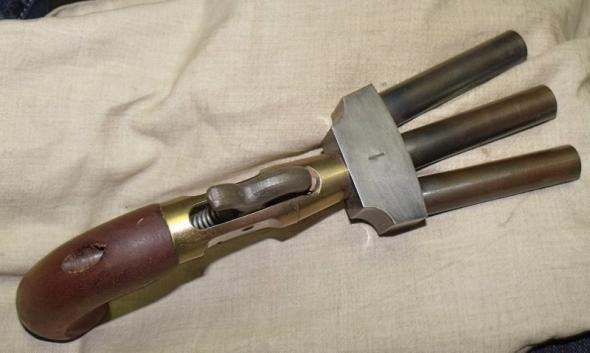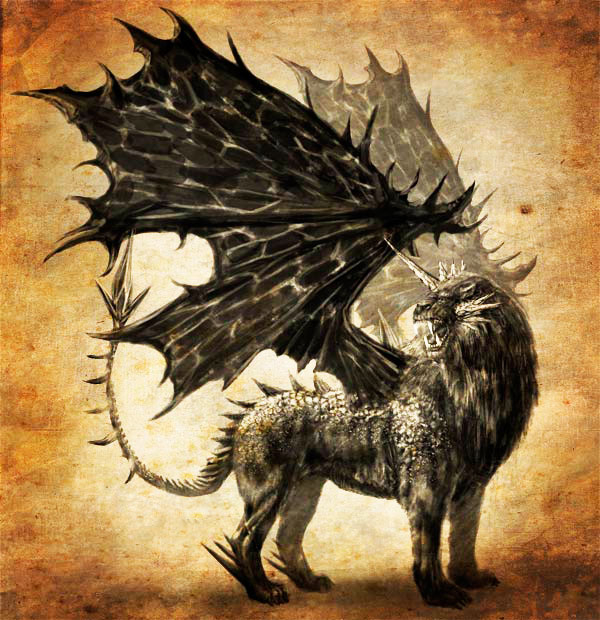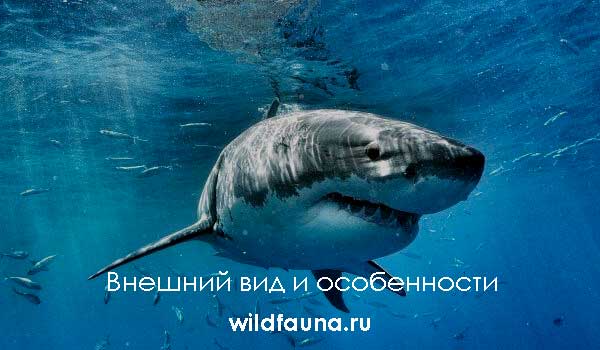Crossword animal world of south america. Crossword "Animals of the rainforest of South America. I. Organizational moment
South America is the fourth largest continent; it lies in the southern hemisphere. Five climatic zones determine the characteristics of the flora and fauna: equatorial, subequatorial, tropical, subtropical and temperate, most of the continent is characterized by a warm climate.
Plant and animal worlds are very rich, many species are found exclusively here. South America is a record holder in many respects, the longest and deepest river in the world flows in the Amazon, the longest mountain range of the Andes is located, the largest mountain lake Titicaca is located, it is the rainiest continent on earth. All this significantly influenced the development of wildlife.
The nature of the different countries of South America:
Flora of South America

The plant world of South America is rightfully considered the main wealth of the mainland. Plants such as tomatoes, potatoes, corn, chocolate tree, rubber tree were discovered here.
The humid tropical forests of the northern part of the continent still amaze with the richness of species, and today scientists continue to discover new plant species here. In these forests there are different types of palm trees, melon tree. There are 750 species of trees and 1,500 species of flowers per 10 square kilometers of this forest.

The forest is so dense that it is extremely difficult to move along it, and creepers make it difficult to move. A typical plant for the rainforest is ceiba. Forest in this part of the mainland can reach a height of more than 100 meters and is distributed over 12 levels!

To the south of the selva there are variable-humid forests and savannahs, where the Quebracho tree grows, which is famous for very hard and very heavy wood, valuable and expensive raw materials. In the savannas, small forests are replaced by thickets of cereals, shrubs, and hard grasses.

Further south are the pampas - the South American steppes. Here you can find many types of herbs, common for Eurasia: feather grass, bearded, fescue. The soil here is quite fertile, since there is less rainfall and it is not washed out. Shrubs and small trees grow among the grasses.

The south of the mainland is a desert, the climate there is more severe, and therefore the vegetation is much poorer. Shrubs, some types of grasses and cereals grow on the stony soil of the Patagonia desert. All plants are resistant to drought and constant weathering of the soil, among them - resinous Chanyar, Chukuraga, Patagonian Fabian.
Fauna of South America

The animal world, like vegetation, is distinguished by its enormous wealth; many species are still not described and not qualified. The richest region is the Amazonian Selva. It is here that such amazing animals as sloths, the smallest hummingbird in the world, a huge number of amphibians, including poisonous frogs, reptiles, including huge anacondas, the world's largest rodent capybara, tapirs, jaguars, river dolphins are found. At night in the forest, a wild ocelot cat hunts, resembling a leopard, but found only in America.

According to scientists, 125 species of mammals, 400 species of birds and an unknown number of species of insects and invertebrates live in the selva. The water world of the Amazon is also rich, its most famous representative is the predatory fish piranha. Other famous predators are crocodiles and caimans.

The savannahs of South America also have rich fauna. Armadillos are found here, amazing animals covered with plates - “armor”. Other animals that can only be found here are anteaters, Onda ostriches, spectacled bear, cougar, kinkaju.

In the pampas of this continent there are deer and llamas who live in open spaces, and who can find here the grass that they feed on. The Andes have their own special inhabitants - llamas and alpacas, whose thick coat saves them from high mountain cold.

In the deserts of Patagonia, where only stiff grasses and small shrubs grow on stony soil, small animals, insects, and various species of rodents live mainly.
South America includes the Pacific Galapogos Islands, which are home to amazing turtles, the largest members of the family on earth.
Resource created for geography lessons on the topic "Animals of the rainforest of South America."
Audience: 8th grade students with intellectual disabilities.
Textbook: T.M. Lifanova, E.N. Solomina "Geography of continents and oceans", Grade 8, p. 143 - 146.
Use cases:
-individually (laminated cards are distributed, the child enters answers with a felt-tip pen);
-collective (crossword on an interactive whiteboard, children take turns writing answers, the next slide is a test).


Horizontally
1. This animal does not know how to growl. It snorts or hisses. (Jaguar)
2. This animal is like a pig and a rhino. But they do not have a relative. (Tapir)
3. Unlike most mammals, this animal has full color vision. (Sloth)
Vertically
1. This bird is called a "tropical woodpecker." (Toucan)
2. This animal is depicted on the coat of arms of the island state of Trinidad and Tobago. (Hummingbird)
3. This animal motionlessly waits for prey, and when it approaches, grabs it with a lightning-fast throw and strangles it. (Anaconda)
4. This animal has one of the lowest body temperatures among mammals - about 33 degrees. (Ant-eater)

Whiteboard Presentation
animals South Am
PPTX / 1.21 Mb
Internet Resources: Animal Images
Crossword "South America"
Crossword Questions "South America"5th, 7th grade
Horizontally:
Vertically:
Crossword "South America"
Crossword "South America"
Crossword Questions "South America"5th, 7th grade
Horizontally:
1. One of the widest waterfalls in the world, on one of the tributaries of the Parana River
2. Ocean washing South America from the east
3. A very large snake that lives in the rivers of South America
4. Where is mainland South America by area?
5. The largest animal is the rodent on Earth.
6. The famous rubber tree of South America
8. The highest mountain lake in the world
Vertically:
2. The world's highest waterfall
3. The greatest, largest lowland area
4. The tree from which bark the medicine is obtained for the treatment of malaria
5. Ocean washing South America from the West
6. The mountains in South America, the longest in the world
7. One of the largest freshwater fish in the Amazon.
8. Mainland South America is the most ...
Crossword Questions "South America"5th, 7th grade
Horizontally:
1. One of the widest waterfalls in the world, on one of the tributaries of the Parana River
2. Ocean washing South America from the east
3. A very large snake that lives in the rivers of South America
4. Where is mainland South America by area?
5. The largest animal is the rodent on Earth.
6. The famous rubber tree of South America
8. The highest mountain lake in the world
Vertically:
2. The world's highest waterfall
3. The greatest, largest lowland area
4. The tree from which bark the medicine is obtained for the treatment of malaria
5. Ocean washing South America from the West
6. The mountains in South America, the longest in the world
7. One of the largest freshwater fish in the Amazon.
8. Mainland South America is the most ...
Crossword "South America"

Crossword Questions "South America"5th, 7th grade
Horizontally:
1. One of the widest waterfalls in the world, on one of the tributaries of the Parana River
2. Ocean washing South America from the east
3. A very large snake that lives in the rivers of South America
4. Where is mainland South America by area?
5. The largest animal is the rodent on Earth.
6. The famous rubber tree of South America
8. The highest mountain lake in the world
Vertically:
2. The world's highest waterfall
3. The greatest, largest lowland area
4. The tree from which bark the medicine is obtained for the treatment of malaria
5. Ocean washing South America from the West
6. The mountains in South America, the longest in the world
7. One of the largest freshwater fish in the Amazon.
8. Mainland South America is the most ...
Grade: 7
Lesson Objectives:
- Repeat, consolidate, summarize the knowledge, skills of students on the topic "South America".
- The formation of the ability to work with geographical coordinates.
- To develop interest and curiosity in the history of the emergence of many plants in Russia.
- Educate honesty, hard work, perseverance, camaraderie.
Form of carrying out: lesson game.
Equipment: physical map of South America, atlases, blanks for a digital dictation, pictures of animals and plants of South America, the crossword "America", James Last recording "Flight of the Condor".
During the classes
I. Organizational moment.
II. Work on the topic of the lesson.
Sounds the melody of James Last "Condor Flight."
I have never been to the distant Amazon.
Foreign ships never go there.
Only Don and Magdalen are high-speed vessels,
Only "Don" and "Magdalen" go by sea there ...
... you will never find in our northern forests
Long-tailed jaguars, armored turtles.
But in sunny Brazil, my Brazil
Such an abundance of unprecedented animals!
Will I see Brazil before my old age ?!
These verses by R. Kipling translated by S.Ya. Marshak, we begin the journey to South America. Teams take part in the trip (team name). Captains represent their teams, motto, logo. The jury is announced, in which there are "experienced sailors", behind whom a considerable experience of such trips.
1 contest: “Geographical warm-up” (estimated by 1 point).
- Humid equatorial forest. (Selva)
- Mountains in the west of South America, the longest mountains in the world. (Andes)
- A semi-desert in the south of the mainland, a place of adventure for the heroes of J. Verne. (Patagonia)
- The largest and heaviest flying bird in the world from the suborder of American vultures. (Condor)
- What language do you need to know to communicate with people in Brazil? (Portuguese)
- The giant Amazon water lily can support a person’s weight. (Victoria - Regia)
- How is the name of the kebracho tree translated? (Break the ax)
- Water boa, the largest snake in the world. (Anaconda)
- The winds most affecting the climate of the east coast of South America. (Trade winds)
- Which tree’s milk sap is rubber? (Hevea Brazilian)
- The highest waterfall in the world. (Angel)
- Silver Lowland (La Plata)
- The English pirate who became an admiral, his name is immortalized on a map of South America. (F. Drake)
- How do you translate "Andes Mountains"? ("Copper Mountains").
2 contest: "Dictation" - written assignment to teams (1 point for the correct answer, 3 minutes to complete)
- The largest of the alpine lakes in the world. (Titicaca)
- Predatory fish in the Amazon. (Ptranha)
- The highest point of South America. (Aconcagua)
- The second name of the South American steppe. (Pampa)
- The largest lowland of the globe. (Amazonian)
- The strait separating the mainland from the Tierra del Fuego archipelago. (Magellans)
- An active volcano in the Andes. (Cotopaxi)
- The deepest river on the planet. (Amazon)
- The widest strait. (Drake - 1120 km)
- One of the largest tributaries of the Amazon. (Madeira)
- Drake
- Amazonian
- Aconcagua
- Cotopaxi
- Pampa
- Amazon
- Magellans
- Madeira
- Piranha
- Titicaca
3rd competition: "The animal world of South America."
Assignment: determine the animal in question in the story (3 points for the correct answer)
- This animal spends all its life on trees in limbo, with its back down. He sleeps 15 hours a day. Very slow. It has a greenish coat color, which makes it almost invisible in the forest. It feeds on leaves, flowers, shoots, fruits of trees. On earth, completely helpless, with difficulty moving around, looking for what you can catch on his claws. The animal is very resistant to hunger, suffers such injuries from which other animals die. It easily tolerates severe poisoning. (Sloth)
- The weight of these birds is 1.5 - 2 g, the beak is thin and long (exceeds the head, neck and torso in length). The legs are weak. The plumage is diverse. The heart occupies almost half of the body cavity, the frequency of its contractions is up to 1,000 beats per minute! It can move forward, backward, to the sides, fly in reverse, making up to 50 wingspan per second. Birds eat a lot (nectar of flowers, insect spiders). They practically do not live in captivity. (Hummingbird)
- This is a predatory animal, an inhabitant of the Amazonian selva. It reaches a length of 2 m, weighs up to 120 kg. Has a strong body, strong and slender legs. He runs and swims perfectly, climbs trees well, preys on any animals (from mice to monkeys), rarely attacks domestic animals. It has two names. One of them was borrowed by an English automobile company, the other is a company producing sportswear and footwear in the USA. (Jaguar, or Puma)
- This fish, having a small size, beautiful golden-black color, terrifies anyone who sees it in the Amazon and its tributaries. It has a heavy lower jaw, on which 77 sharp teeth. On the upper jaw - 66 teeth. He hunts for everything that moves in the water, takes nothing from the bottom. Very aggressive, attacks in a flock, the attack is lightning fast. In a matter of seconds, the skeleton remains from the victim. (Piranha)
4 contest: Crossword "America" (for the correct guessed completely crossword puzzle - 5 points.
Horizontally:
- The deepest river on Earth. (Amazon)
- The city on the Amazon, to which ocean vessels rise up the river. (Manaus)
- Lake in the Andes. (Titicaca)
Vertically:
- The highest waterfall in the world on the Orinoco River (Angel)
- River flowing into the bay of La Plata of the Atlantic Ocean. (Parana)
- Desert on the Pacific coast. (Atacama)
- Volcano in the Andes, its height - 5,400 m. (Ruiz)
5th contest: “Guess the plants” (3 points for the correct answer)
- The ancient peoples of America, this plant was in high esteem. Poems, songs, legends, religious rituals were dedicated to him. The rain god was pictured with this plant. In Europe, this plant was first learned from Christopher Columbus, now it can be found in many places on the globe, a lot of it in the Caucasus. The fruits are tasty, they make flour, starch, butter, syrup, canned food. Indians cook mamalyku from the fruits (something between porridge and bread). The Indian name for this plant is maize. What do we call him? (Corn)
- From the fruits of this tree, the Indians prepared a drink, which they called 2 Theo bromine, ” "Drink of the Gods", giving strength, courage, energy. Europeans added cream and sugar to this drink, while getting a tasty treat. (Cocoa)
- Perhaps there is no person on Earth who does not know this plant, often called the second bread. In Russia, until the 2nd half of the 18th century, they did not know him. In Europe, the plant first appeared in Spain and England, thanks to Christopher Columbus and Francis Drake. In Spain he was called in Indian “papa”, in Italy - “truffle”, in France - “earth apple”. In other languages, the name of the plant was: “potates”, “potateos”, “putatis”. Peter the Great sent a bag of plant fruits to Russia from Holland. At the royal court he was called the "tartufel" and served only at banquets. Nowadays, tartufel grows in almost every garden. What is it called? (Potatoes)
- This valuable tree grows in Brazil, in the Amazon. It gives milky juice - latex, from which rubber is obtained, i.e. natural rubber. What is this tree? (Hevea Brazilian)
- This plant has two names. In scientific books, its Indian name is given. The first plants brought from America had yellow fruits and small ones like paradise apples from which they made jam. In the sun these fruits shone so much that the Italians gasped: “Polo is expensive!” “Golden Apple” At first they were planted in flower beds for beauty, it was not allowed to try the fruits, rumors circulated that they were harmful to health. The bravest were the Portuguese, then the Germans, French, Italians. The plant moved from the flowerbed to the garden. (A tomato)
- The Spaniards brought from America a flower similar to the sun, and presented it to the botanical garden in Madrid. The plant came to Russia from Holland, where Peter I saw it. They planted it in the flower beds of landowners' estates. The Germans tried to make coffee from the roasted seeds of this plant, but nobody began to drink it. Oil from the seeds of this plant is used in salads, for the preparation of canned food, margarine, mayonnaise, and confectionery. Delicious halva and kozinaki are made from peeled seeds. What is this “flower of the sun"? (Sunflower)
6th competition: “Captains competition” (written task for 3-5 minutes, for correctness - 10 points)
- This country is called the country of "green gold" and "golden fruits." Green Gold is a cultivated plant native to Africa, brought to this South American country and brought it worldwide fame. The golden fruits, which turn into a delicious confectionery after processing, are produced by the local tropical tree. Name the country and tell what kind of trees and fruits are we talking about (Brazil, coffee, cocoa).
- Which of these dances came to Europe from South America: waltz, sirtaki, hopak, tango, polka, levonikha? (Tango)
- Find true Americans in this list: orange, turnip, corn, sunflower, watermelon, cucumber, tomato, birch, onion, potato, tobacco, raspberry, spruce, hevea, linden. (Corn, sunflower, tomato, potato, tobacco, hevea).
7th competition: “Navigation Competition” (for the correct answer - 5 points)
- What are these islands, if their coordinates are 0 ° W? and 90 ° W? (Galapagos)
- The fishermen on the raft are in distress, their coordinates are 40 ° S and 120 ° W What course did the raft get into? Will it help people get to the shore? (The raft fell during the Westerly winds, the raft will carry east to the coast of Chile)
- What is noteworthy for South America is the point with coordinates 12 ° N. and 71 ° W? (Cape Golinas - North Point)
- What is superfluous on this list? Marañon, Madeira, Parana, Zambezi, Rio Negro, Ukayali, Congo, Tapajos, Limpopo, Tokantins, Orange (Tributaries of the Amazon) (Zambezi, Congo, Limpopo, Orange)
- Team-wide. Task: find errors in the story.
“Our journey to South America began on large influx Amazon River - Parana. The path lay on extreme south mainland, to the famous selva. There, on the territory south America's largest state - Uruguay, there is a selva, driest natural area Of the earth. Plant world of selva poor, almost no herbs, flowers. Then we went by helicopter to eastmainland to the Andes. it low mountainstheir highest point of everything 895 m. In these mountains there is Lake Titicaca, from which originates Orinocoriver flowing into the Pacific. On Orinoco there is Angel Falls, named in honor of the most common fish in Orinoco. From the river already fall to Patagonia, the wettest region in South America.
South America ranks fourth among the continents in area (17.8 million km 2) and population (385 742 554 people).
1. The first European to reach the shores of South America.
2. The plateau in South America, which was investigated by Russian scientists G.I. Langsdorf and N.G. Rubtsov.
3. The region explored by the German geographer A. Humboldt.
4. Ocean washing the territory of South America.
5. The extreme southern point (cape) of South America.
6. A geographic feature (cape) located in South America.
7. Ocean washing the territory of South America from the west.
8. Geographical object (isthmus) located in South America.
9. Geographical object (Earth), located in South America.
10. The cape defining the extreme northern point of South America.
11. The mainland, located in close proximity to South America.
12. Geographical object (sea) located in the territory of South America.
13. The cape defining the extreme western point of South America.
14. The first European to describe the nature of South America.




